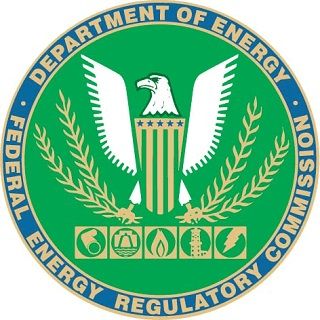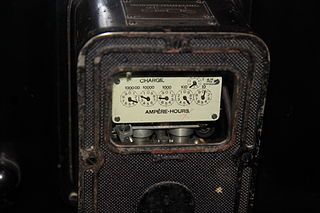Ocean Current Hydrokinetics and Global Climate Change

But does it have to be so short on meaningful content? OK, it wasn’t made for scientists, but aren’t even garden-variety humanoids interested in things like:
• Can this be cost-effective?
• What are the challenges?
• What are the fantasies? I.e., in a perfect world, how much energy can we get, and what is the real potential to offset our consumption of fossil fuels?
Maybe that last one’s not a bad question to ask on the very week that the concentration of CO2 in the Earth’s atmosphere just crossed 400 parts per million.

 I thought readers might appreciate this collection of
I thought readers might appreciate this collection of  It’s been only two years since FERC (The U.S. Federal Energy Regulatory Commission) announced that it would allow DR (demand response) to be treated the same as any other dispatchable power source. But in those two years, a great deal of work has gone into implementation, and, according to this
It’s been only two years since FERC (The U.S. Federal Energy Regulatory Commission) announced that it would allow DR (demand response) to be treated the same as any other dispatchable power source. But in those two years, a great deal of work has gone into implementation, and, according to this  I learned recently that long-time 2GreenEnergy Associate Bill Paul has been doing some truly excellent work in an area of tremendous importance: calling attention to crimes against the environment. Not only is his work of great value, it’s easy to absorb; he produces short videos that, IMO, have huge impact and “punch.” I hope you’ll check them out. Here’s the first of what I hope to be a great number of posts on the subject:
I learned recently that long-time 2GreenEnergy Associate Bill Paul has been doing some truly excellent work in an area of tremendous importance: calling attention to crimes against the environment. Not only is his work of great value, it’s easy to absorb; he produces short videos that, IMO, have huge impact and “punch.” I hope you’ll check them out. Here’s the first of what I hope to be a great number of posts on the subject: In our wide-ranging discussion of our civilization’s sustainability, I normally sidestep the issue of religion. Yes, I occasionally write something opposing some of our nation’s elected lawmakers, ostensibly our most capable thinkers, who build their
In our wide-ranging discussion of our civilization’s sustainability, I normally sidestep the issue of religion. Yes, I occasionally write something opposing some of our nation’s elected lawmakers, ostensibly our most capable thinkers, who build their  There were some very thought-provoking presentations at the quarterly
There were some very thought-provoking presentations at the quarterly  When I was in kindergarten (in 1960), I made a fine friend in the person of Glenn Koach. As we grew close through our years as young boys together, I could see that Glenn was “not just anyone;” he was smart, athletic, always impeccably dressed, and extremely self-assured. Here we are 50+ years later, and Glenn runs a
When I was in kindergarten (in 1960), I made a fine friend in the person of Glenn Koach. As we grew close through our years as young boys together, I could see that Glenn was “not just anyone;” he was smart, athletic, always impeccably dressed, and extremely self-assured. Here we are 50+ years later, and Glenn runs a  It should come as a surprise to no one that Microsoft would like to dominate the world of smart-grid as this phenomenon becomes ubiquitous in our personal and business lives over the coming decades. OK, so how do IT companies become “dominant?” That’s a question that was answered to the world’s complete satisfaction half a century ago: define and become a de facto standard. Then, if you’re Microsoft, use aggressive business tactics that make life extremely difficult for those who try not to adopt that standard.
It should come as a surprise to no one that Microsoft would like to dominate the world of smart-grid as this phenomenon becomes ubiquitous in our personal and business lives over the coming decades. OK, so how do IT companies become “dominant?” That’s a question that was answered to the world’s complete satisfaction half a century ago: define and become a de facto standard. Then, if you’re Microsoft, use aggressive business tactics that make life extremely difficult for those who try not to adopt that standard. As the clock turns and the world churns ever onward into the future, there is a rising tide of consciousness for the necessity of environmentally sound business practices. Though these green initiatives take a wide variety of forms, there are a host of new commercial buildings being constructed to be ecologically sound. These jolly green giants are making a name for themselves in the world of corporate responsibility through the adherence to strict environmental guidelines.
As the clock turns and the world churns ever onward into the future, there is a rising tide of consciousness for the necessity of environmentally sound business practices. Though these green initiatives take a wide variety of forms, there are a host of new commercial buildings being constructed to be ecologically sound. These jolly green giants are making a name for themselves in the world of corporate responsibility through the adherence to strict environmental guidelines. Depending on where you live in the United States, you’ll see that your electricity and energy rates will fluctuate. Electricity providers calculate your energy usage and electricity prices by
Depending on where you live in the United States, you’ll see that your electricity and energy rates will fluctuate. Electricity providers calculate your energy usage and electricity prices by